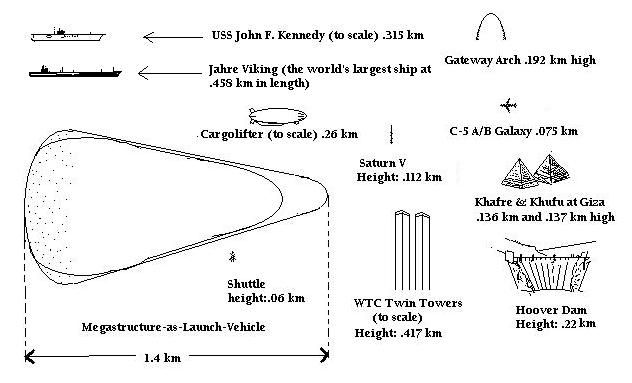Close this Window
Lighter-than-air Megastructure Launch Vehicle Concept
Stephan Szyman
Chicago Astronomical Society
[email protected]
Abstract
Part of the huge costs associated with sending payloads to orbit with current chemical
rockets is their limited and relatively small payload capacities. To pose a question, if
Mercury-Atlas was the Wright Flyer of spaceflight, what would a 747 look like? This is a
concept for a lighter-than-air megastructure aerospace vehicle inspired by the "floating
city," the so-called "Cloud nine (Tensegrity sphere)" of R. Buckminster Fuller. The
vehicle would sufficiently reduce payload price per pound to make feasible the integration
of orbital/ solar system operations with terrestrial shipping container/ transportation
systems already in place.
Performance of the megastructure LV in the Earth's atmosphere would be that of a
lighter-than- air vehicle in the form of a blunted cone, which would remain at altitude
for loading/ offloading of cargo. The propulsion system for launch and orbital/
interplanetary operations would be similar to the Orion concept of the 1950s. The hull
would be one kilometer in diameter, with a coating thickness sufficient to withstand
re-entry. It would be manufactured off-planet to take advantage of the microgravity and
near-vacuum environments. Careful engineering and inspection during the forge phase would
bring the reliability level to that of current commercial aviation, and it would be a
valuable part of the infrastructure for both launch and landing of cargos, with obvious
applications for extraterrestrial resources exploitation and waste disposal.

Presented at ISDC 2011 - Huntsville.
Paper and presentation charts are not available.
Copyright National Space Society (NSS) 2011.
Close this Window
